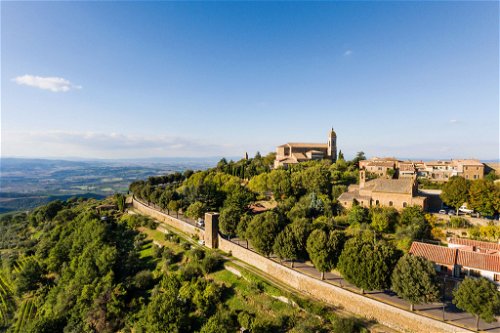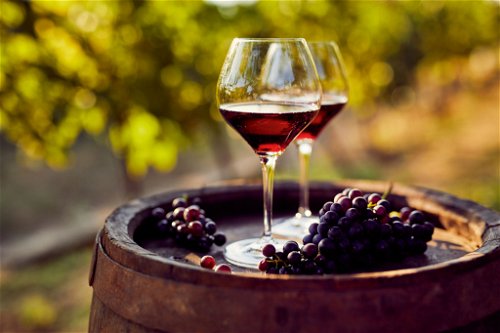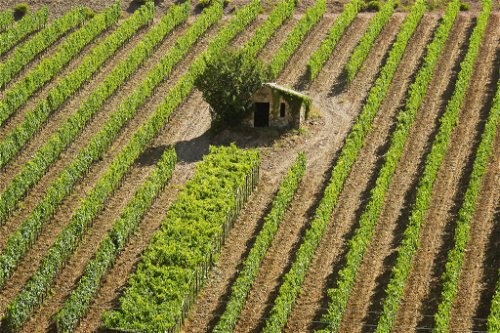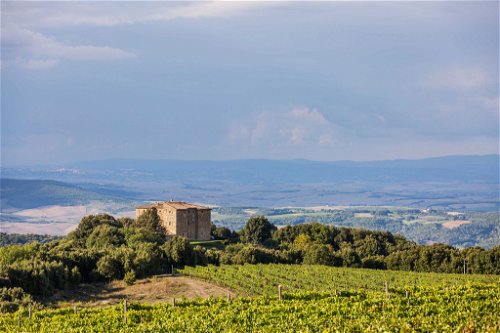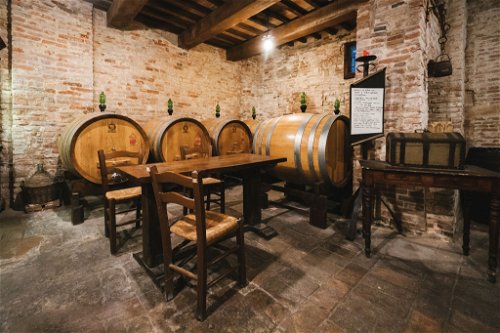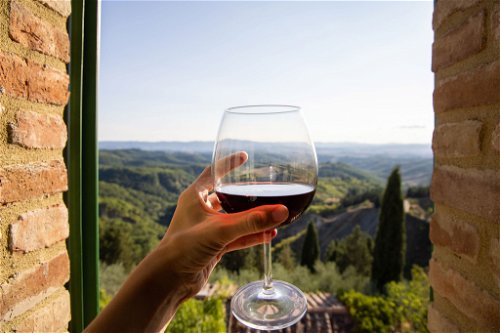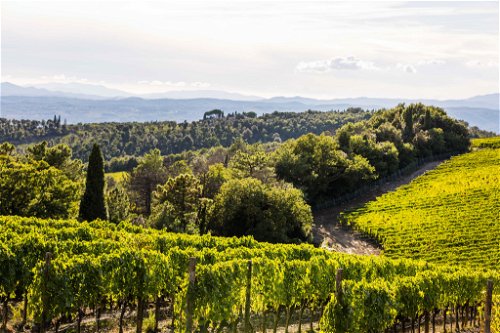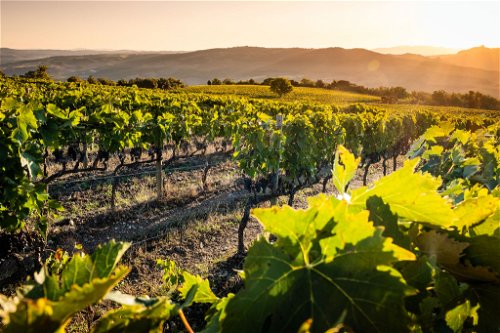A brilliant vintage: the best of Brunello di Montalcino 2019
Brunello di Montalcino: this name excites the hearts and minds of wine lovers all over the world. Brunello only comes onto the market five years after the harvest, making it the Italian red wine with the longest storage period. Every new vintage is eagerly awaited, especially in the main market, the USA. An outstanding vintage has now been presented with the 2019 - connoisseurs see it in the same league as the legendary 2016 and 2010 vintages. But the Riservas 2018 are not to be sneezed at either.
Montalcino is located in the south of Tuscany, just 40 kilometres below Siena. The main town is located at a lofty height of 560 metres. The vineyards stretch along the slopes and hills all around. The vineyards in the Montalcino area cover 3,500 hectares. Brunello is grown on 2,100 hectares of the total area, and until last autumn, 510 hectares were reserved for Rosso di Montalcino, the second wine of Brunello, which requires less time to mature and is fresh and juicy, but also shows good depth. Shortly before the end of the year, it was decided to expand the area under cultivation for Rosso di Montalcino by a further 350 hectares.
In contrast, the area under Moscadello di Montalcino has shrunk to just 60 hectares. Moscadello is the original wine of Montalcino, which has been cultivated here since the Middle Ages; a delicious sweet wine based on Muscat grapes. However, Montalcino is not exempt from the generally dwindling demand for sweet wines on the international market. So it should come as no surprise that the areas are steadily declining. The remaining vineyards are used to produce Sant'Antimo DOC, mostly a cuvée of original French varieties and IGT Toscana.
The four sides of the hill
Montalcino is characterised by a Mediterranean climate, with warm to hot summers and cool winters. The wide valley of the River Orcia opens up on the south side. It is only 30 kilometres from Sant'Angelo Scalo to the sea. The valley is particularly important for the microclimate in the southern part of the growing region.
The sea on one side, Monte Amiata - a mighty extinct volcano - on the other. There is a significant temperature difference between the high Monte Amiata, where you can also ski in winter, and the sea, a generator of constant winds. These are precious for the vineyards in the south of Montalcino, as they provide some relief from the hot summer temperatures.
The Brunello vineyards are all located within the same municipal area, but there are some important differences between north and south, east and west. These differences are increasingly taken into account in Montalcino. For the time being, Montalcino still wants little to do with a small-scale classification by vineyard, as has already been done in comparable regions (Barolo, Soave, Vino Nobile). According to geology, geography, microclimate and expression in the wines, however, one can clearly distinguish the four sides of the hill of Montalcino: Northwest, Northeast, Southeast and Southwest. The north-west side is largely dominated by forest. Vineyards are few and far between here. With Castiglione del Bosco and Tenute Nardi, there are two farms with larger areas.
The climate is significantly warmer on the south-west side, and it can get oppressively hot in summer. Some cooling air flows through the Orcia Valley. There is little woodland here, with large areas of vineyards and cereal fields dominating. Some of the largest wineries in terms of surface area are located here, such as Castelgiocondo(Frescobaldi), Pian delle Vigne(Antinori), Col d'Orcia and Banfi. Other well-known producers in the southwest include Argiano, Pieve di Santa Restituta and Soldera.
The north-east side slopes down from the main town towards Buonconvento. The climate here is somewhat cooler and, in normal years, rainier than in the south. In the increasingly hot and dry years, however, this side is increasingly at an advantage. There are many classic farms such as Altesino and Caparzo in the far north, while Fuligni, Canalicchio di Sopra, Siro Pacenti, Il Marroneto, Baricci and Capanna are a little closer to the city. A special small site here is the Montosoli hill, prized for wines rich in finesse.
The south-east side is considered the area with the longest wine-growing history. It stretches from the main town towards Castelnuovo dell'Abate. The vineyards of Biondi Santi are located in this area, as are a large part of Casanova di Neri (which also owns vineyards in the far south near Castelnuovo) and those of Pian dell'Orino. Continuing towards Castelnuovo, we come across farms such as Mastrojanni, Poggio di Sotto and Ciacci Piccolomini. Around Sant'Angelo del Colle there are farms such as Poggione, Talenti, Lisini and Giodo. The somewhat higher-lying farms such as Poggio Antico and Le Ragnaie are also part of the south-east.
The 2019 vintage
A Brunello di Montalcino may only be produced from Sangiovese. The wines from this most important Italian red wine grape are characterised by a bright ruby to garnet colour, appealing aromas of cherry, plum, blackberry and tobacco, a pronounced acidity that lends juiciness, and present, robust tannins. A Brunello must mature for five years in the cellar, at least two of which must be in wooden barrels. The 2019 Brunello will therefore only go on sale in the coming months.
The winter of 2018/2019 was quite mild, with sufficient rain falling between mid-January and mid-February, allowing the soil to build up good water reserves. The spring was quite cool, with vegetation lagging behind by around two weeks at the end of May. June and July were sunny, with average temperatures of around 25 degrees, so not too hot. The plants were not exposed to any drought stress and the vegetation continued to grow. It was hot in August with temperatures between 30 and 35 degrees. However, sufficient water reserves were still stored in the soil, so the ripening process was never interrupted. There was some rain at the beginning of September, which removed the dust from the grapes and reduced the sugar content somewhat. The harvest took place in dry and warm weather from the end of September.
The vintage can be described as classic. Some of the wines are still somewhat restrained on the nose, and the acidity and tannins are also very present, but overall they have really great potential. It's best to put the 2019s to one side for the next five years, after which they will shine. Until then, you can stick to the 2018s. They are much more accessible, some have beguiling noses and a great flow.
Trophy Brunello di Montalcino 2019
Brunello 2019
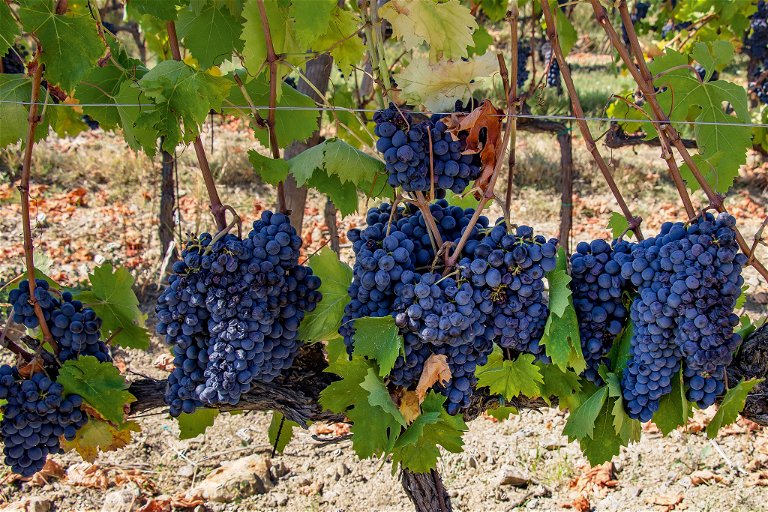
Area profile
The area
Montalcino is located in the southern inland region of Tuscany, less than an hour's drive from Siena. The Brunello growing area is limited to a single municipality, that of Montalcino. The big wine boom came to the city in the 1990s. Before that, there was only one producer who carried the name Brunello out into the world. Today, over 200 wineries produce Brunello di Montalcino.
The variety
Sangiovese and nothing else, that is the rule for the production of Brunello. For many connoisseurs, this original Italian grape variety finds its highest expression in the vineyards around Montalcino.
Brunello 2018 and Riserva 2018
Don't miss out!
Sign up now for our newsletter.

